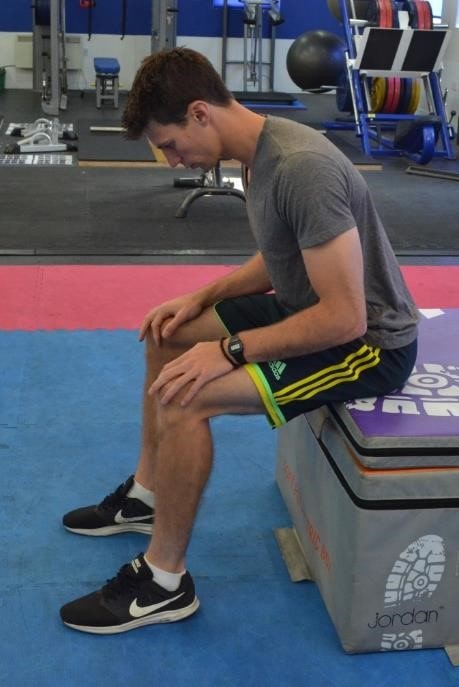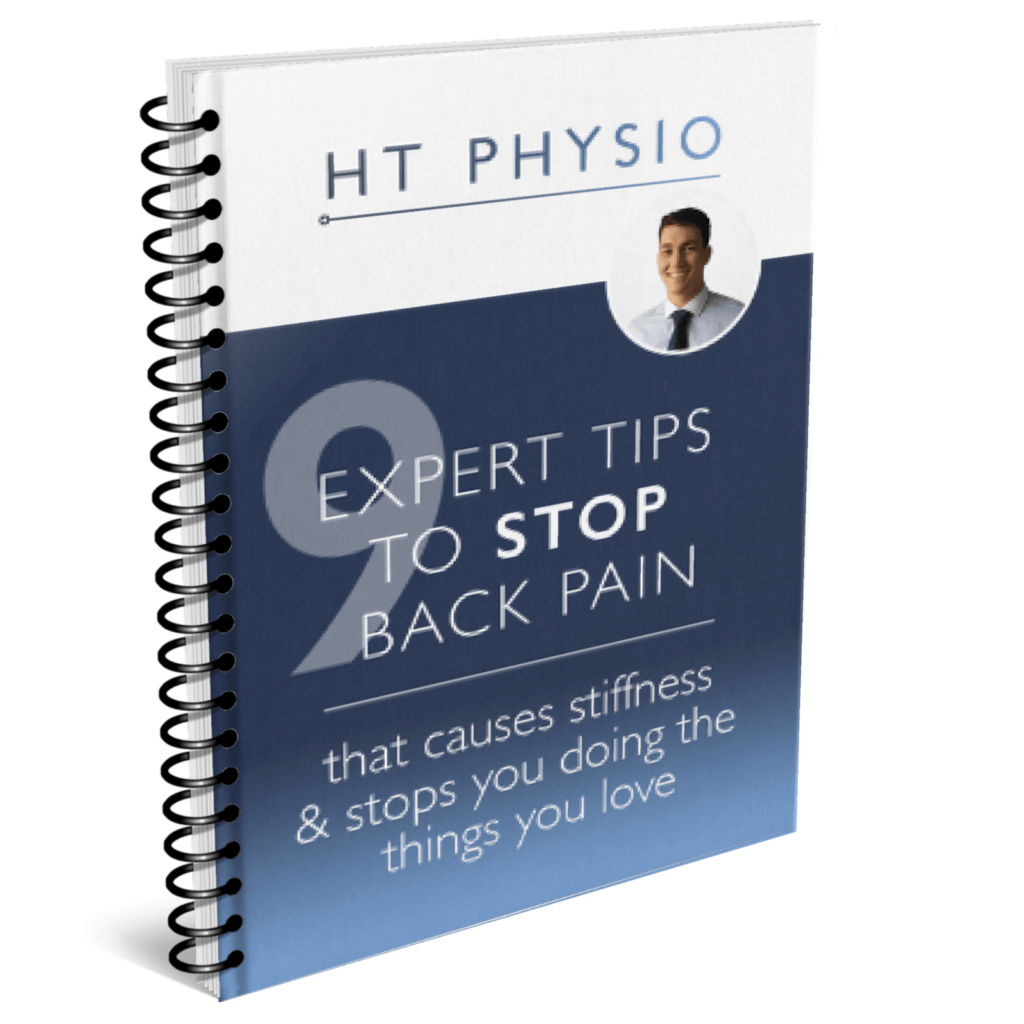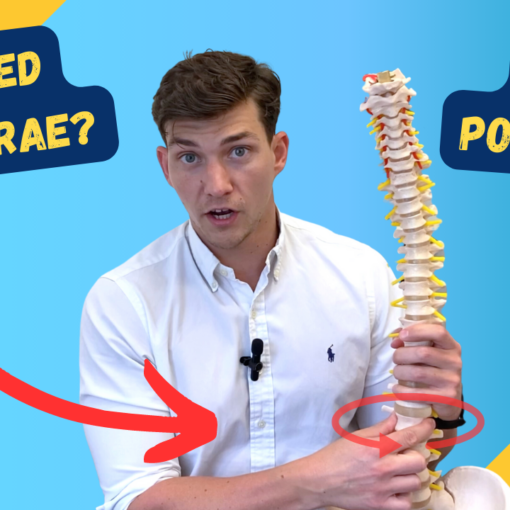A lot of people complain about a stiff, achy and sore lower back after they’ve been walking, sitting or standing for any length of time. We particularly see this problem in people over-50. Luckily, we’ve got the tools to diagnose and treat this issue, and we’re going to share them with you today!
A lot of the individuals we see with this issue are suffering to some degree from ageing changes in their spine. Now, this is a horrible term and conjures up images of worn discs and even disability – but it’s really just a way of describing the normal process of getting older in the lower back, much like how we get wrinkles in our faces as we grow older.
Every single person over the age of 40 has some degree of deterioration going on in their spines – it’s just a fact of life!
Luckily, there are ways to help it.
What Ageing Changes Do We See?
Degenerative disc disease (or DDD) is basically a fancy term for the wear and tear that occurs in the jelly-like discs in our spine as we age. Sometimes called “spondylosis”, DDD generally means a thinning of the discs as they lose water.
In DDD, there may also be tiny tears and breaks present in the discs, which can cause further wear to the disc, but don’t worry – these are normal processes and are usually painless.
However, in some people (but not all), DDD can lead to stiffness, back pain and sciatica.
People over 50 also get deterioration of the joints in their spine (called facet joints) which lose their cartilage and become stiffer. This is commonly referred to as “arthritis” in the spine. However, again, it’s not painful for everyone.
What Happens After a Diagnosis?
Although receiving a diagnosis of degenerative disc disease or arthritis can be terrifying for anyone, it is actually more common than most of us think.
And when I say common, I mean VERY common. In fact, the latest research shows that 68% of people over 40 years of age suffer from some degree of degenerative disc disease!
Oh, and I should mention one thing; the people in this study were ASYMPTOMATIC!
This means that they DIDN’T have back pain, sciatica or painful stiffness.
When the researchers looked at people over the age of 60, they found that 88% of people in their cohort suffered from some degree of wear and tear, while almost all of their participants over 80 years old showed arthritis on an MRI scan.
Here are the full findings of this study:

This is a fascinating study as it shows that ageing changes may not actually be the direct cause of back pain.
So, when you look at it in this way, degenerative disc disease and arthritis aren’t really “diseases” at all – just extremely common parts of the ageing process!
What About When Ageing IS Painful?
There are instances when these changes causes back pain and sciatica, however, and this is often because the discs have thinned in a way that causes a pressure on the nerve roots in the spine. This irritates the nerve and can cause pain along the course of that nerve.
This irritation around a nerve causes what we call an “inflammatory response” in that area, where lots of irritating chemicals are released around a nerve causing pain (as anyone suffering from sciatica can tell you).
It is important to note that a “disc bulge” and degenerative disc disease are NOT the same thing; a disc bulge is usually caused by a large tear in a healthy disc, with the bulge directly pressing on the nerve. The pain from a disc bulge is usually more severe than the pain from degenerative disc disease, but disc bulges often improve within 12 weeks… while DDD pain may stay at a constant low-moderate level for a long time.
The following video explains the ageing changes that happen to our discs with some handy diagrams:
What Makes A Painful Back More Likely in Over-50’s?
- Manual lifting, especially with poor technique: people who work in manual lifting jobs are more likely to suffer from back pain, simply because they put more stress and strain through their spines over the course of many years. This is even more apparent when their job involves lifting and twisting too; twisting causes “shearing” forces through the discs and this can accelerate the ageing process.
- Car accidents: sudden jolts caused by road traffic collisions can rapidly accelerate the process of wear and tear to a disc in the lower back (and neck, of course).
- Poor diet: poor nutrition has been shown to accelerate the ageing process throughout the entire body, and one of the areas that this is seen most clearly is in the health of a disc. Eating sugary, fatty foods on a regular basis can certainly begin, and worsen, degenerative disc disease.
- Being overweight: due to the compressive force that excess weight has on a person’s spine, being overweight can accelerate ageing in the spine and cause painful problems. The plus side of this, however, is that a lot of overweight people I have worked with have actually had their back pain and sciatica symptoms disappear, simply by dropping some weight! Often, as little as a 4lb loss of weight equates to a noticeable decrease in pain.
- Age: of course, age is the largest predictor of ageing changes in the back, with a positive correlation between increasing age and increasing disc height loss. However, ageing does NOT need to be a painful process, provided you make the right decisions and look after your body!
- Smoking and drinking: cigarettes and alcohol have a pro-inflammatory effect within the body; exactly what we DON’T want for someone suffering from back pain or sciatica. The chemicals released from these bad habits will also accelerate the process of disc ageing.
So, What Can We Do About Back Pain Caused By Ageing Changes?
First, it is important to realise that while the process of disc degeneration cannot be reversed, the symptoms have potential to be greatly improved!
Let me tell you about one client I had 2 years ago who achieved astounding benefits from the simplest of treatments.
He was a gentleman in his 40’s who had suffered with back pain (and gradually worsening sciatica) for the last 10 years. He was a ground worker by trade and had never had any manual lifting training, meaning that he was lifting and swinging a hammer with the WORST possible technique, for over 20 years.
When he came to see me, he was unable to work, in significant distress, and had just had an MRI done on his lower back – the results came back as degenerative disc disease.
Having never had treatment before, he was (of course) sceptical of physio and suggestions that he may be able to improve his symptoms WITHOUT needing to go under the knife – he genuinely believed he was a lost cause and would need surgery.
Unsurprisingly, when I assessed him, his back was incredibly stiff. He struggled to bend forward more than a few inches.
The work that I asked him to do to treat his back worked around the premise of needing to increase the range of motion in his lower back. Once the range of motion increases, so will the mobility of the joints and nerves within the spine, and these structures will then become LESS irritated and move in a MORE natural way. As a consequence of all this, pain almost always reduces, too.
How Did it Work?
I started him off very slowly – with just some very basic lower back bending exercises. We chose bending forward because that was the MOST COMFORTABLE movement for him (i.e. it caused him the least pain). He went home and practiced this movement, flexing forward barely 6 inches, then returning to the start, over and over.
He repeated this until the first sign of pain, then he stopped and returned to it later that day.

He came back to see me in 2 weeks time, smiling from ear to ear – his symptoms had reduced by 40-50% for the first time in years.
Together, we continued working in this way, along with some nerve flossing exercises to help the affected nerve move better within the spine and legs, too.
Overall, his improvement was enough to get him back to work within 12 weeks – an outcome that he hadn’t expected and a relief to his entire family.
This Sounds Like Me – What Should I Do?
If you’ve been reading this article thinking this sounds similar to what you’re experiencing right now – there are a few steps you can take to ensure you are doing the right thing to help your back:
- Don’t panic! Back pain, especially as you get older, is extremely common. However, it isn’t a life sentence! Choosing the right steps from this point on can certainly help turn things around.
- Download our guide “9 Expert Tips to Stop Back Pain that Causes Stiffness and Stops You from Doing the Things You Love”. It’s completely free and will give you a range of ideas including our best tips for helping back pain at home. Click here to download the guide now!

3. Put these tips into action! And if you’d like some personalised advice about how to get your back better, consider requesting a free telephone consultation with one of our back pain specialists – who can guide you even further to the things you should or shouldn’t be doing to help your back.
Conclusion
Ageing changes are a fact of life! BUT they don’t have to necessarily be painful! A lot of times, pain is caused by a movement problem or stiff, tight muscles and not anything serious. Expert guidance can definitely help, as well as some of the online resources we spoke about earlier.
Most importantly, remember, you aren’t alone!
What has your experience been with ageing and back pain? Is there anything you’ve found that helps? Write in the comments section below and let us know!




